Format numbers as currency, rounding values to monetary or fractional monetary using unit a convenient heuristic.
label_currency(
accuracy = NULL,
scale = 1,
prefix = "$",
suffix = "",
big.mark = ",",
decimal.mark = ".",
trim = TRUE,
largest_with_fractional = 1e+05,
...
)Arguments
- accuracy, largest_with_fractional
Number to round to. If
NULL, the default, values will be rounded to the nearest integer, unless any of the values has non-zero fractional component (e.g. cents) and the largest value is less thanlargest_with_fractionalwhich by default is 100,000.- scale
A scaling factor:
xwill be multiplied byscalebefore formatting. This is useful if the underlying data is very small or very large.- prefix, suffix
Symbols to display before and after value.
- big.mark
Character used between every 3 digits to separate thousands.
- decimal.mark
The character to be used to indicate the numeric decimal point.
- trim
Logical, if
FALSE, values are right-justified to a common width (seebase::format()).- ...
Arguments passed on to
numberstyle_positiveA string that determines the style of positive numbers:
"none"(the default): no change, e.g.1."plus": preceded by+, e.g.+1."space": preceded by a Unicode "figure space", i.e., a space equally as wide as a number or+. Compared to"none", adding a figure space can ensure numbers remain properly aligned when they are left- or right-justified.
style_negativeA string that determines the style of negative numbers:
"hyphen"(the default): preceded by a standard hypen-, e.g.-1."minus", uses a proper Unicode minus symbol. This is a typographical nicety that ensures-aligns with the horizontal bar of the the horizontal bar of+."parens", wrapped in parentheses, e.g.(1).
scale_cutNamed numeric vector that allows you to rescale large (or small) numbers and add a prefix. Built-in helpers include:
cut_short_scale(): [10^3, 10^6) = K, [10^6, 10^9) = M, [10^9, 10^12) = B, [10^12, Inf) = T.cut_long_scale(): [10^3, 10^6) = K, [10^6, 10^12) = M, [10^12, 10^18) = B, [10^18, Inf) = T.cut_si(unit): uses standard SI units.
If you supply a vector
c(a = 100, b = 1000), absolute values in the range[0, 100)will not be rescaled, absolute values in the range[100, 1000)will be divided by 100 and given the suffix "a", and absolute values in the range[1000, Inf)will be divided by 1000 and given the suffix "b". If the division creates an irrational value (or one with many digits), the cut value below will be tried to see if it improves the look of the final label.
Value
All label_() functions return a "labelling" function, i.e. a function that
takes a vector x and returns a character vector of length(x) giving a
label for each input value.
Labelling functions are designed to be used with the labels argument of
ggplot2 scales. The examples demonstrate their use with x scales, but
they work similarly for all scales, including those that generate legends
rather than axes.
See also
Other labels for continuous scales:
label_bytes(),
label_number_auto(),
label_number_si(),
label_ordinal(),
label_parse(),
label_percent(),
label_pvalue(),
label_scientific()
Examples
demo_continuous(c(0, 1), labels = label_currency())
#> scale_x_continuous(labels = label_currency())
 demo_continuous(c(1, 100), labels = label_currency())
#> scale_x_continuous(labels = label_currency())
demo_continuous(c(1, 100), labels = label_currency())
#> scale_x_continuous(labels = label_currency())
 # Customise currency display with prefix and suffix
demo_continuous(c(1, 100), labels = label_currency(prefix = "USD "))
#> scale_x_continuous(labels = label_currency(prefix = "USD "))
# Customise currency display with prefix and suffix
demo_continuous(c(1, 100), labels = label_currency(prefix = "USD "))
#> scale_x_continuous(labels = label_currency(prefix = "USD "))
 yen <- label_currency(
prefix = "¥",
suffix = "",
big.mark = ".",
decimal.mark = ","
)
demo_continuous(c(1000, 1100), labels = yen)
#> scale_x_continuous(labels = yen)
yen <- label_currency(
prefix = "¥",
suffix = "",
big.mark = ".",
decimal.mark = ","
)
demo_continuous(c(1000, 1100), labels = yen)
#> scale_x_continuous(labels = yen)
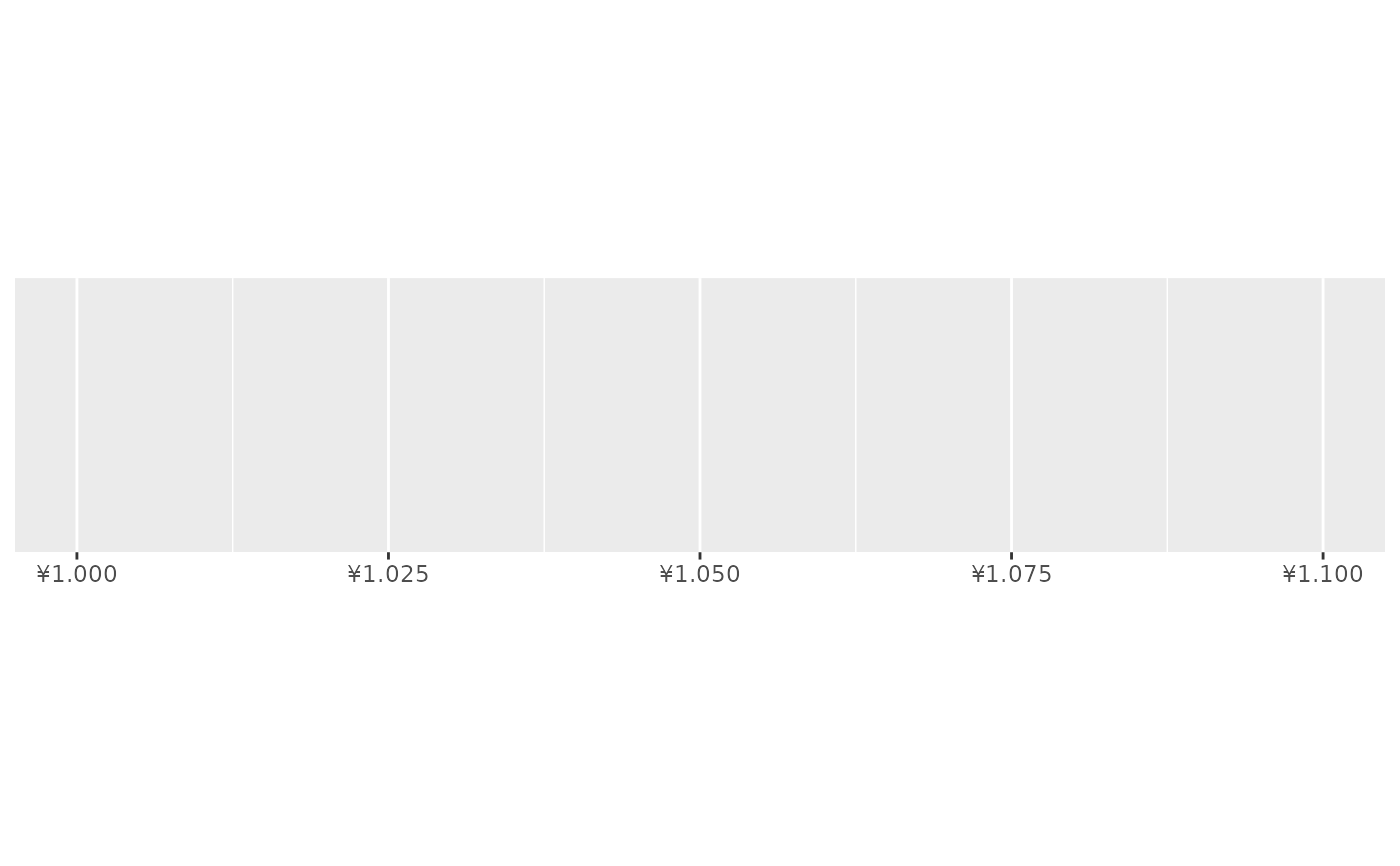 # Use style_negative = "parens" for finance style display
demo_continuous(c(-100, 100), labels = label_currency(style_negative = "parens"))
#> scale_x_continuous(labels = label_currency(style_negative = "parens"))
# Use style_negative = "parens" for finance style display
demo_continuous(c(-100, 100), labels = label_currency(style_negative = "parens"))
#> scale_x_continuous(labels = label_currency(style_negative = "parens"))
 # Use scale_cut to use K/M/B where appropriate
demo_log10(c(1, 1e16),
breaks = log_breaks(7, 1e3),
labels = label_currency(scale_cut = cut_short_scale())
)
#> scale_x_log10(breaks = log_breaks(7, 1000), labels = label_currency(scale_cut = cut_short_scale()))
# Use scale_cut to use K/M/B where appropriate
demo_log10(c(1, 1e16),
breaks = log_breaks(7, 1e3),
labels = label_currency(scale_cut = cut_short_scale())
)
#> scale_x_log10(breaks = log_breaks(7, 1000), labels = label_currency(scale_cut = cut_short_scale()))
 # cut_short_scale() uses B = one thousand million
# cut_long_scale() uses B = one million million
demo_log10(c(1, 1e16),
breaks = log_breaks(7, 1e3),
labels = label_currency(scale_cut = cut_long_scale())
)
#> scale_x_log10(breaks = log_breaks(7, 1000), labels = label_currency(scale_cut = cut_long_scale()))
# cut_short_scale() uses B = one thousand million
# cut_long_scale() uses B = one million million
demo_log10(c(1, 1e16),
breaks = log_breaks(7, 1e3),
labels = label_currency(scale_cut = cut_long_scale())
)
#> scale_x_log10(breaks = log_breaks(7, 1000), labels = label_currency(scale_cut = cut_long_scale()))
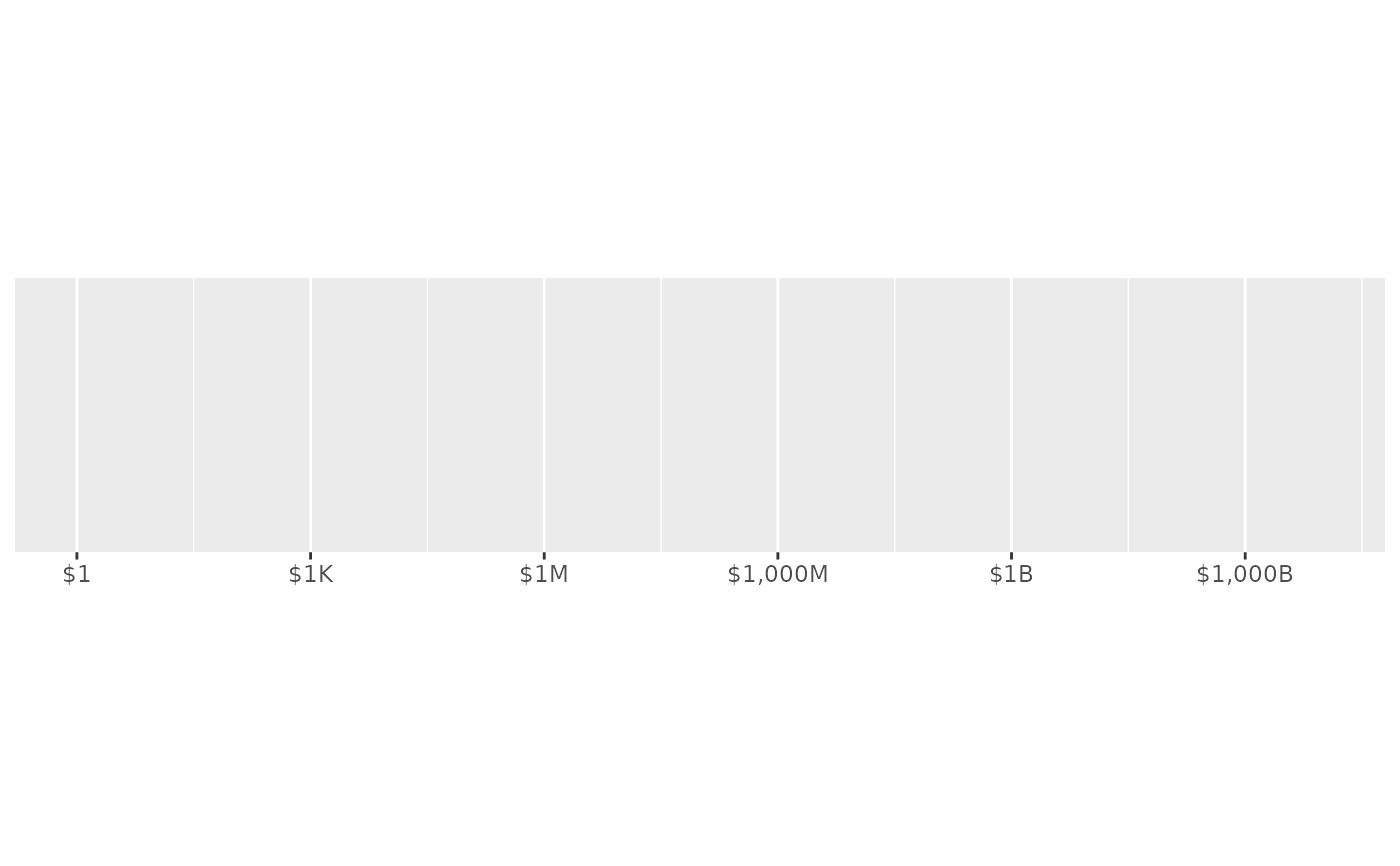 # You can also define your own breaks
gbp <- label_currency(
prefix = "\u00a3",
scale_cut = c(0, k = 1e3, m = 1e6, bn = 1e9, tn = 1e12)
)
demo_log10(c(1, 1e12), breaks = log_breaks(5, 1e3), labels = gbp)
#> scale_x_log10(breaks = log_breaks(5, 1000), labels = gbp)
# You can also define your own breaks
gbp <- label_currency(
prefix = "\u00a3",
scale_cut = c(0, k = 1e3, m = 1e6, bn = 1e9, tn = 1e12)
)
demo_log10(c(1, 1e12), breaks = log_breaks(5, 1e3), labels = gbp)
#> scale_x_log10(breaks = log_breaks(5, 1000), labels = gbp)
